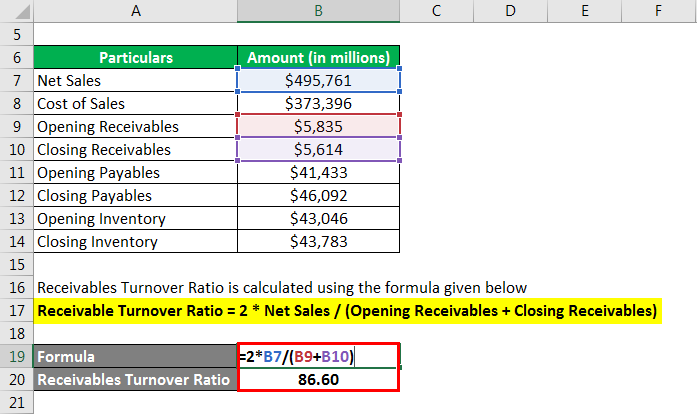

It’s usually worked out on an annual basis, but this can also be broken down to produce a monthly or quarterly figure. What you need to know about receivables turnover ratio Once you have these two values, you can divide net credit sales by the average accounts receivable to obtain the receivables turnover ratio.

Net Credit Sales: This refers to the total amount of sales made on credit during a specific period, minus any returns, allowances, or discounts.Īverage Accounts Receivable: This is calculated by adding the beginning and ending accounts receivable balances for a given period and dividing the sum by 2. To calculate the receivables turnover ratio, you need to determine the net credit sales and the average accounts receivable. Receivables Turnover Ratio = Net Credit Sales / Average Accounts Receivable The formula for calculating the receivables turnover ratio: It’s widely used in business to measure how efficiently a company is using its assets. You might have heard of it being called the debtor’s turnover ratio. Where have you heard of receivables turnover ratio? Conversely, a low receivables turnover ratio suggests that a company takes longer to collect payments, which can be a potential indicator of credit collection issues or ineffective credit policies.A high receivables turnover ratio indicates that a company collects its receivables quickly, which is generally a positive sign of effective credit management.The receivables turnover ratio is calculated by dividing net credit sales by the average accounts receivable during a specific period.The receivables turnover ratio is a financial metric used to assess how efficiently a company manages its accounts receivable.


 0 kommentar(er)
0 kommentar(er)
